
5G technology development and status overview

1. Unprecedented 5G Development
With the increasing society development requirement, new technology is becoming an indispensable position and role in the process, while 5G and the derived applications are the key roles for it. Now, 5G is enjoying an unprecedented development, with the user base forecast to grow to 500 million in three years, a scale that 3G and 4G took nine and six years, respectively, to achieve. 2019 is the first year of 5G scaled commercial adoption, with more than 60 5G commercial networks projected to be globally deployed. By H1 of 2019, 19 telecom carriers in 11 countries announced the launch of 5G services. Scaled commercial rollouts have already kicked off in the UK, the US, Japan, South Korea, and China
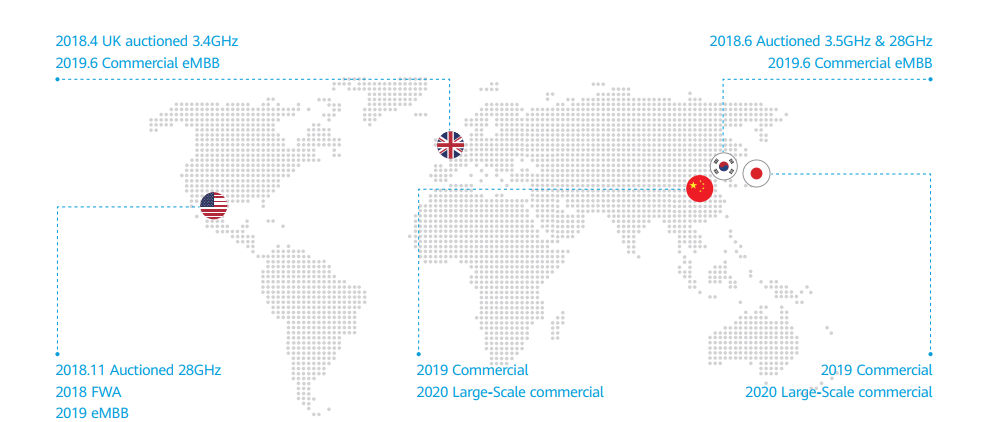
* Source: Huawei MI, 2019
Figure 1-1 Countries with scaled 5G deployments in 2019
Global 5G spectrum auctioning also signifies 5G’s rapid development. By H1 of 2019, more than 30 countries auctioned 5G spectrum, with C Band in 22 countries, mmWave in 5, the 2.6 GHz band in 4, and the 700 MHz bands in 3. The US, Mexico, and Canada assigned 600 MHz band. It is predicted that the 5G spectrum will be auctioned in over 80 countries by 2020.
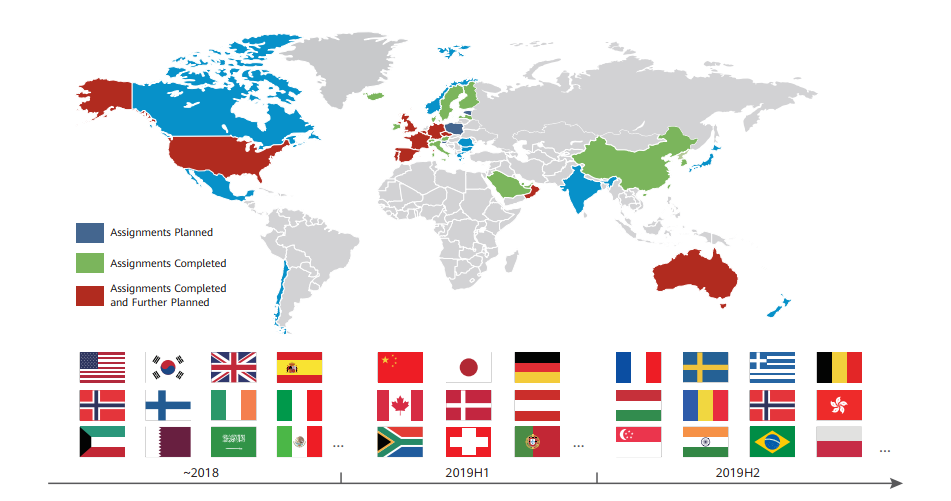
2. Widely applicable scenario of 5G
Compared with traditional 2-4G technology, 5G provides users with a better experience and enables massive connectivity between people, between machines, and between people and machines. It supports low-latency transmissions, using which remote healthcare, VR/AR, self-drive, and other innovative services can be implemented, as illustrated in Figure 2-1.
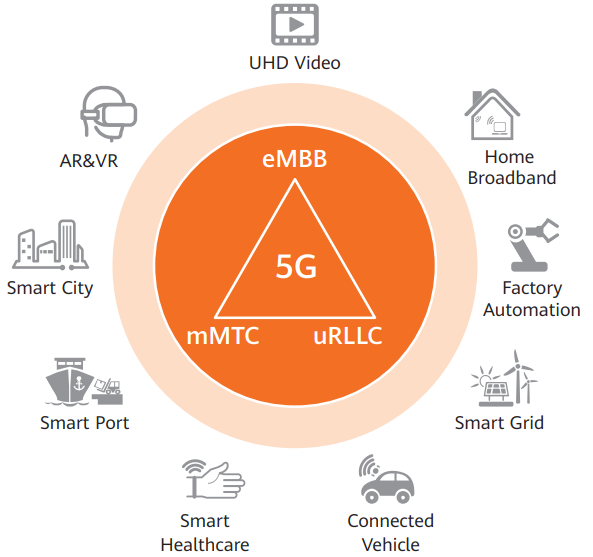
However, if we want to achieve such multiple scenes application commercially, it will need more. 5G service requires 5G networks with 1000 times larger capacity and 10 to 100 times faster data speeds. The International Telecommunication Union (ITU) sets 1 Gbit/s as the benchmark for user-perceived peak rate, with an omnipresent perceived speed of 100 Mbit/s for outdoor places. The Next Generation Mobile Networks (NGMN)
Alliance put forward a similar set of standards that include a perceived speed of above 1 Gbit/s in dense-urban areas, a ubiquitous 100 Mbit/s in urban areas, and a pervasive 50 Mbit/s in suburban areas. Delightedly, the 5G ecosystem has seen accelerated development in maturity. By Q2 of 2019, Qualcomm, Samsung, and Huawei have all launched terminal chips that support 5G NSA, SA, and NSA-SA and the interconnection tests have been completed. Commercial terminals have been launched. Till May 2019, there are over 50 5G terminals available on the market, with the lowest price at US$ 662. 5G networks have been commercially adopted in China, the United States, Japan, South Korea, and European countries. The forecast indicates that, by 2020, 5G smartphones will account for 20% of global smartphone shipment and the price of low-end mobile phones will be reduced to US$300.
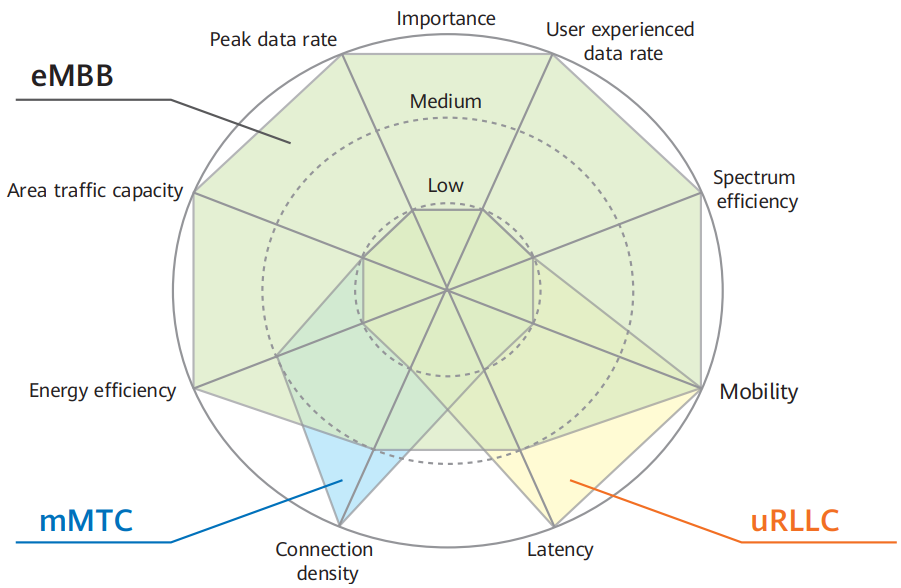
3.Glimpse of the 5G Ecosystem
3.1 5G chipset(CPU) solution company industry layout
5G technology competition is fierce in the SoC supplier for a long time. Among these solution suppliers: Qualcomm, Huawei, Apple, Samsung, Spreadtrum, and MTK are the key participants. The whole 5G market profit is up to the Trillion level, so the mainstream chipset giants spare no effort to battle for it by investing great money on it. Here we share the latest 5G chipset comparison of them for reference:
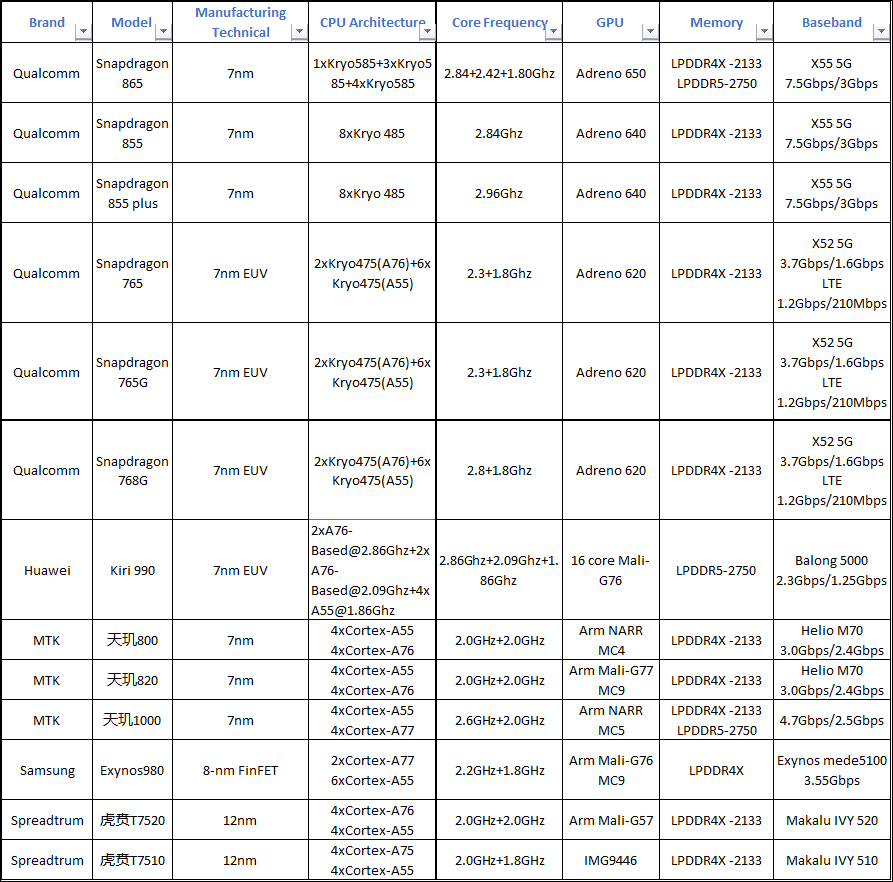
3.2 5G base station equipment solution supplier status quo
To accelerate 5G commercial pace, the equipment operator needs to invest a lot in the infrastructure establishing. According to latest Dell’Oro research data, the rank of telecommunication market globally is as below as of Q1 2020: Huawei(285), Nokia(15%), Ericsson(14%) ZTE(11%), Cisco (6%)

3.3 5G commercial operator distribution status quo
By now, there ae 34 countries with 63 operators commercially taking use of 5G globally. The detailed showed as below:
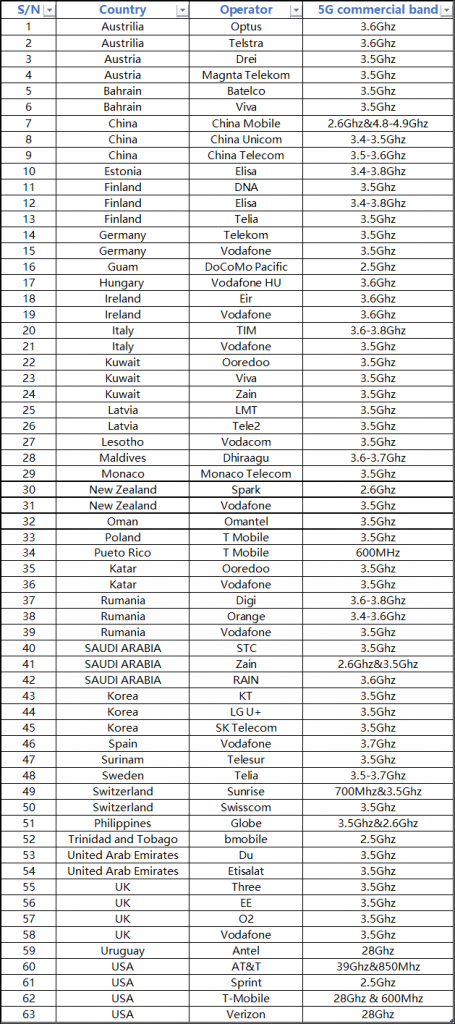
3.4 5G Antenna design development status quo
Coordinated design is a consistent focus of the industry. In 4G(LTE), this involves (component-level) simulation and tests that aim to maximize capacity and coverage performance through antenna pattern optimization. In 5G, RAN-antenna coordination will reach unprecedented levels. Depending on the applicable object, it is categorized as component-level, product-level, and feature-level collaboration, as illustrated in Figure 3-4.
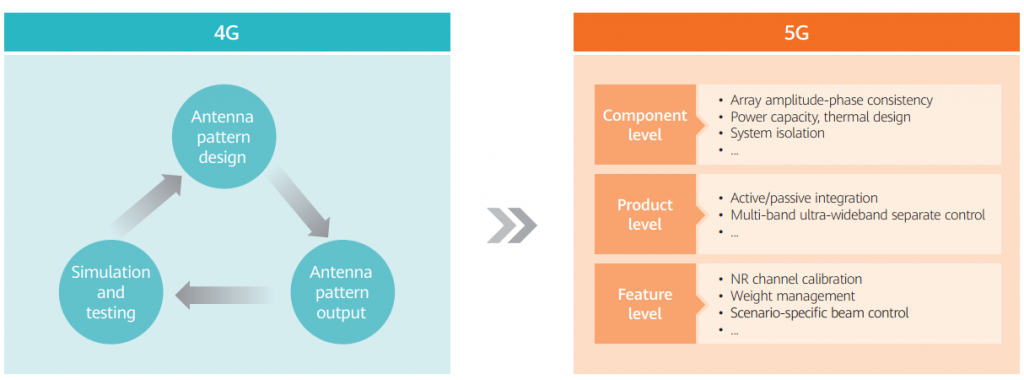
*RANs mean Radio Access networks
The whole Antenna industry is very mature now with plenty of vendor resources globally. The brand mobile phone companies, such as iPhone、Xiaomi、Huawei、OPPO、Vivo and others, have greatly promoted it to step another new stage.
4. Insights on 5G development
5G technology has brought a new race world widely which can be predicted to lead a new round economic change and challenge. All the countries are speeding to grasp the opportunity to occupy the leading 5G technology leadership. It’s believed that we can obtain the benefit from 5G and eventually it will become massively commercial applied globally. We need to balance the cooperation and competence to fulfil the real values of the technology itself to our human beings. Only this way, we can go far and go lasting in a robust and healthy manner.
5.Summary
The 5G promise is exciting and real. Fifth-generation mobile networks are beginning to enable a variety of new technologies by bringing much faster data rates and unprecedented reliability to wireless communications. Say hello to lightning-fast downloads and real-time high-definition video streaming, smart farming, and optimal traffic management, and look forward to using cases such as autonomous vehicles and remote surgery (such as in Covid-19 period). Let’s be open to 5G’s ultra-fast experience and we can do more to make a better place for us.
By Kent Zhang
VP of Yosong Technology
Shenzhen, China

